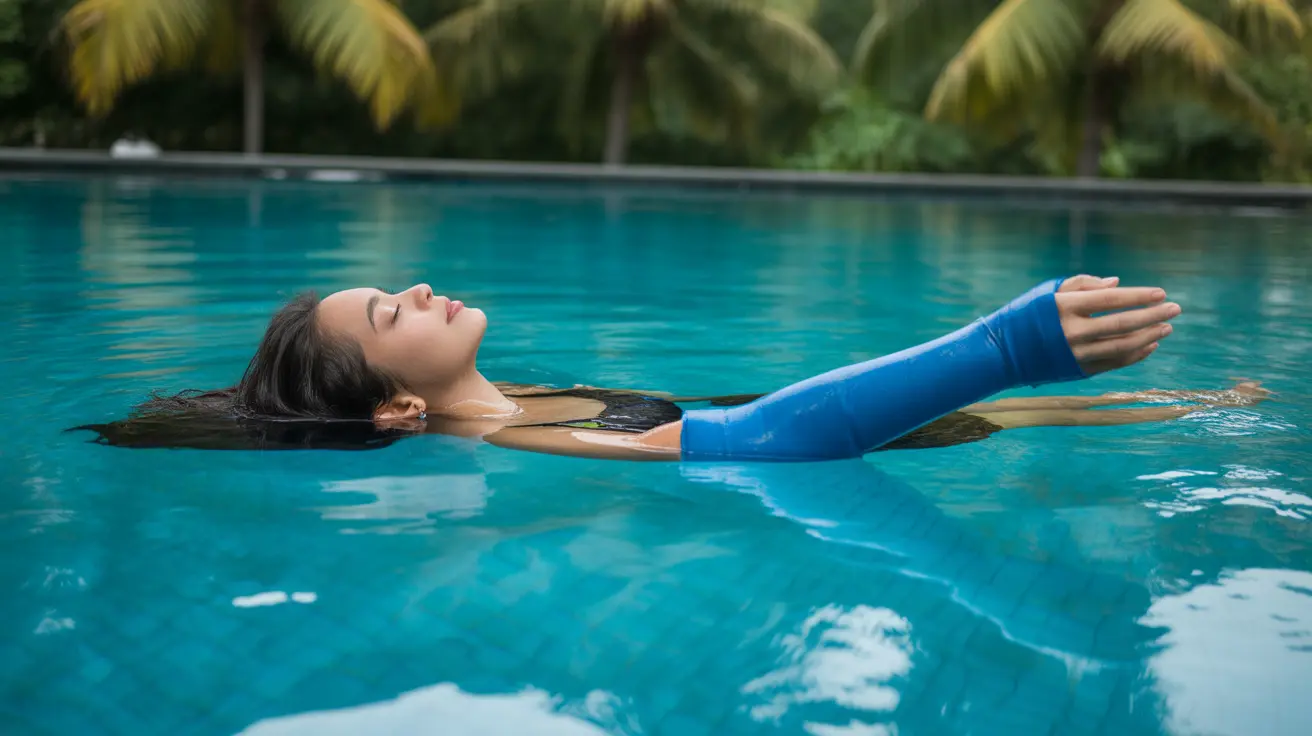If you've recently received a cast for an injury, you might be wondering whether swimming is possible during your recovery period. The good news is that with modern waterproof casts, many patients can continue enjoying water activities while their injury heals. However, understanding the proper precautions and care techniques is crucial for a safe experience.
This comprehensive guide will explore everything you need to know about swimming with a cast, including safety measures, proper care techniques, and important considerations for different water environments.
Understanding Waterproof vs. Traditional Casts
Waterproof casts represent a significant advancement in medical technology, offering distinct advantages over traditional fiberglass casts. These modern casts feature a special liner that repels water while allowing the skin to breathe, making them ideal for patients who want to maintain their active lifestyle during recovery.
Key features of waterproof casts include:
- Quick-drying synthetic padding
- Water-resistant liner material
- Breathable construction
- Enhanced comfort during water activities
Pool Swimming Guidelines
Swimming in a pool with a waterproof cast requires specific precautions to ensure both safety and proper healing. Before entering the pool, consult your healthcare provider to confirm that your cast type and injury are suitable for swimming activities.
Essential safety measures include:
- Waiting 48-72 hours after cast application before swimming
- Using appropriate flotation devices to keep the injured area elevated
- Limiting swimming sessions to reasonable durations
- Avoiding aggressive movements that could strain the injured area
Natural Water Safety Considerations
While pool swimming can be relatively safe with a waterproof cast, natural bodies of water present additional challenges. Lakes, oceans, and ponds contain various contaminants that could potentially affect your healing process.
Important factors to consider include:
- Bacterial content in natural water sources
- Presence of sand or debris that could enter the cast
- Unpredictable water conditions
- Limited visibility in murky water
Proper Cast Care and Maintenance
Maintaining your waterproof cast after water exposure is crucial for preventing complications and ensuring optimal healing. Following the right care procedures will help preserve the cast's integrity and protect your skin.
Essential care steps include:
- Thorough rinsing with clean, fresh water after swimming
- Proper drainage of any trapped water
- Complete drying using appropriate techniques
- Regular inspection for signs of damage or deterioration
Eligibility and Restrictions
Not everyone with an injury is a suitable candidate for a waterproof cast. Several factors determine eligibility, including the type and location of the injury, the stage of healing, and any underlying health conditions.
Common considerations include:
- Severity and location of the fracture
- Presence of surgical sites or wounds
- Overall health status
- Expected duration of cast wear
Frequently Asked Questions
Can you go swimming in a pool with a waterproof cast, and what precautions should you take?
Yes, you can swim in a pool with a waterproof cast, but you must wait 48-72 hours after application. Take precautions such as using appropriate flotation devices, limiting swim time, and ensuring proper drying afterward.
Is it safe to swim in lakes, oceans, or ponds while wearing a waterproof cast?
Swimming in natural bodies of water carries additional risks due to bacteria and debris. While possible with a waterproof cast, it's generally recommended to stick to clean, chlorinated pools to minimize infection risks.
How do you properly dry and clean a waterproof cast after showering or swimming?
After water exposure, rinse the cast with clean water, allow proper drainage, and use a hair dryer on cool setting to dry the inside. Gently pat the exterior dry and ensure all areas are completely dry to prevent skin irritation.
What are the main differences between a waterproof cast and a traditional fiberglass cast?
Waterproof casts feature special water-resistant liners and quick-drying materials, while traditional fiberglass casts must stay completely dry. Waterproof casts offer greater lifestyle flexibility but may not be suitable for all injury types.
Who is eligible for a waterproof cast, and when should you avoid using one for swimming?
Eligibility depends on factors like injury type, location, and healing stage. Patients with complex fractures, recent surgery, or certain medical conditions may not be candidates. Always consult your healthcare provider for personalized guidance.




